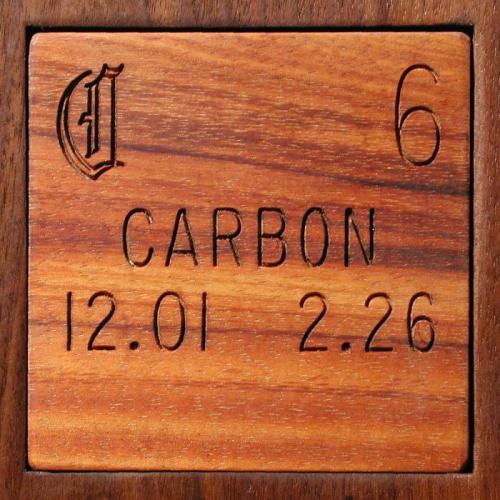 Nanotubes. Nanotubes.
For centuries, people knew pure carbon in two forms, diamond and graphite. Diamond is three-dimensional matrix of carbon atoms in which each atom is bonded to four others in a tetrahedral arrangement. Graphite on the other hand consists of two-dimension sheets of hexagons, like a honeycomb, in which each carbon atom is bonded to three others. These sheets are loosely stacked on top of each other in bulk graphite, and it is their ability to slip around on each other that makes graphite so soft and slippery.
There's only one way to arrange the atoms in diamond, but it turns out that sheets of graphite can be wrapped around into tubes and spheres in a great variety of ways, forming some truly remarkable substances, some of which may turn out to be of vast importance.
The first really amazing form of carbon to be discovered is called buckminsterfullerene, after Buckmister Fuller the inventor and popularizer of many geodesic dome structures. Buckmisterfullerene is often referred to as "bucky balls" because it consists of molecules of 60 atoms in a graphite-like arrangement, curved and joined to itself to form a beautiful geodesic sphere.
These nanotubes consist of sheets of graphite rolled into tubes only a few nanometers in diameter. Nanotubes can be made in different diameters, and with one, two, three, or more concentric layers of wall. These happen to be multi-wall nanotubes.
What can you do with nanotubes? Well, one thing you can do, a trick the University of Illinois is famous for, is fill them with bucky balls, forming a sort of nano-peapod. Other things you might be able to do is build electronic circuitry with wires of unimaginable fineness. The tubes are also extremely strong: If you could make them long and bundle them into a substantial fiber, you could make threads and cables of extreme strength.
How are these incredibly fine, structured molecules manufactured? Is it some clever chemical synthesis in which atoms are assembled in an orderly way? Well, not exactly. The manufacturing process for bucky balls and nanotubes alike can be described basically as creating soot by burning or heating carbon and carbon compounds in high-temperature electric arcs, blasting with lasers, or some other similarly crude method. After making a bag of soot, you use various chemical methods to separate out and purify the particular form you're looking for. The trick is to adjust the conditions of your arc or laser in such a way as to maximize the percentage of the carbon that arranges itself into the form you want. For example, if you want nanotubes, you pass a laminar flow of gas through the arc. It's not too surprising that this encourages the carbon to form into tubes rather than balls: Think soap bubbles made by holding
the ring in a strong, steady breeze.
Nanotube powder is incredibly light and fluffy! This sample is a pile about half an inch wide the way it's stacked in the photo, but it weighs only about 7mg (0.007 grams). A full liter of this stuff would weight only about 25 grams, 40 times less dense than water.
Note that this stuff is extremely black. Really, really black. It looks gray in the pictures, but that's because I increased the exposure time to allow you to see the details of the structure, and I'm using very concentrated lights to put as much light as possible right on the sample. And needless to say, if you think you see some kind of tube-like thing in there, it's not a nanotube! The tubes typically range in length from tens to hundreds of micrometers, and may reach as long as a millimeter, but even such an extraordinarily long one could not be seen in anything other than an electron microscope, because they are so incredibly thin.
Here are good websites for carbon nanotubes and
peapods.
Source: Prof. Jianguo Wen
Contributor: Prof. Jianguo Wen
Acquired: 2 May, 2003
Text Updated: 11 August, 2007
Price: Donated
Size: 0.5"
Purity: 99.99%
|
| 
|
|